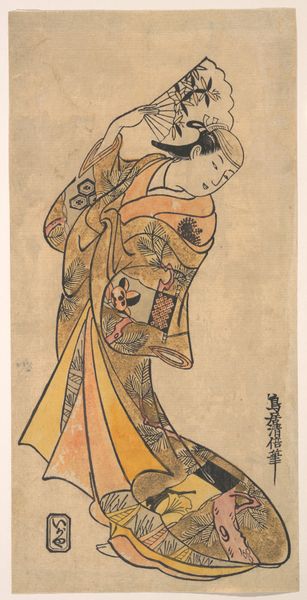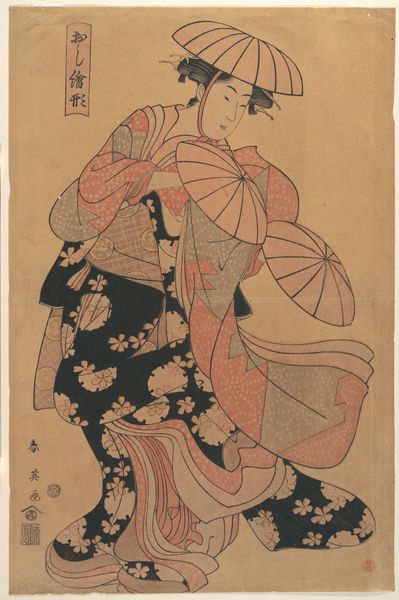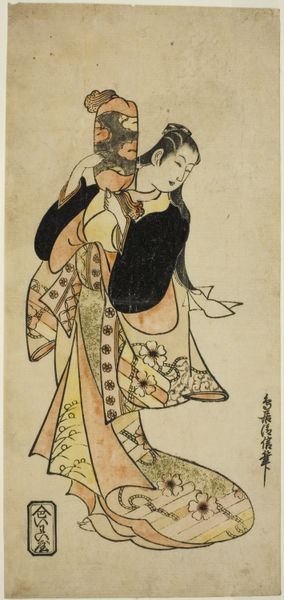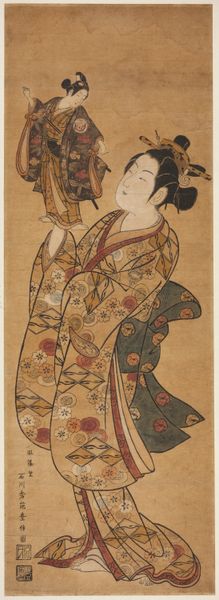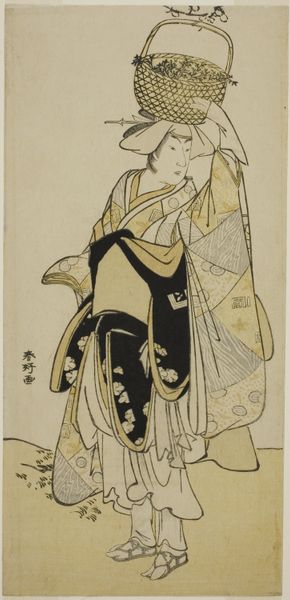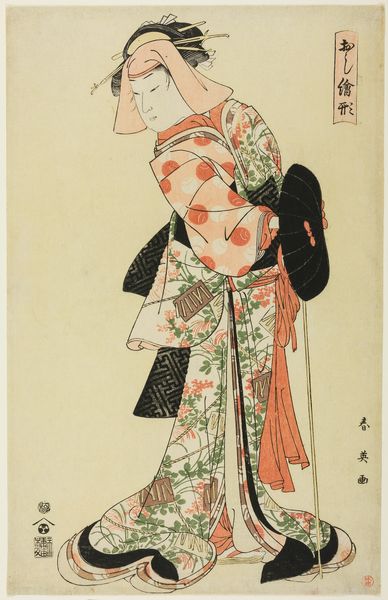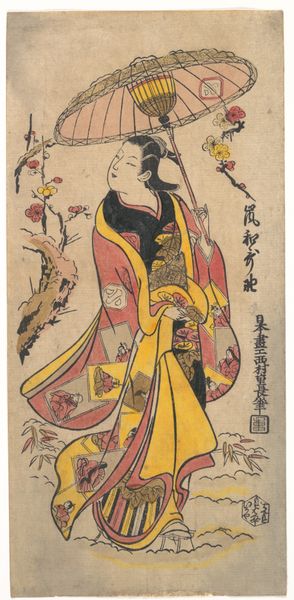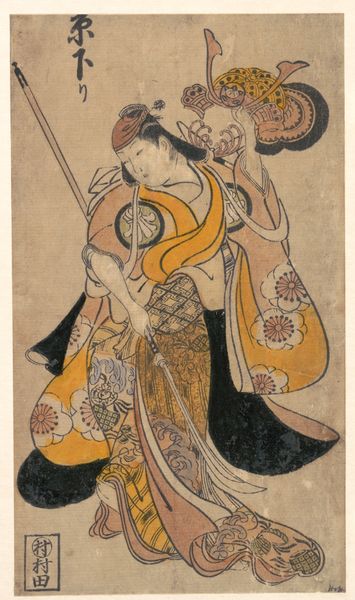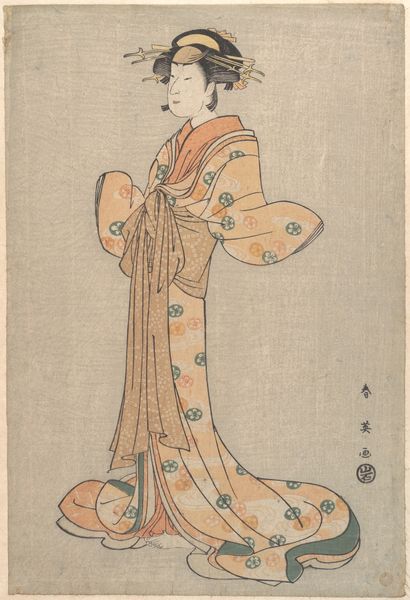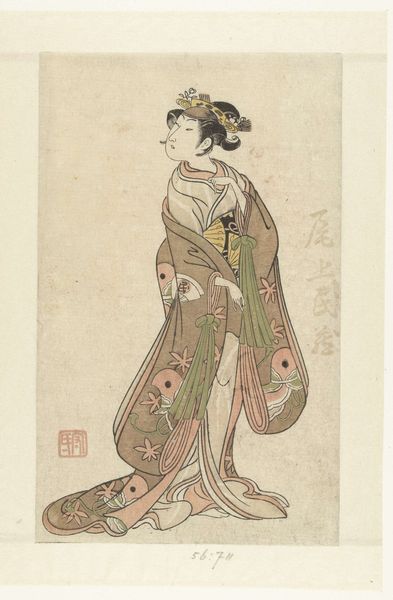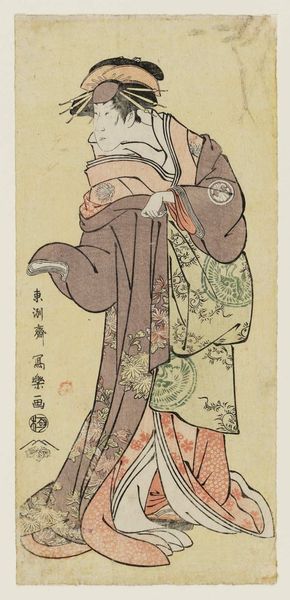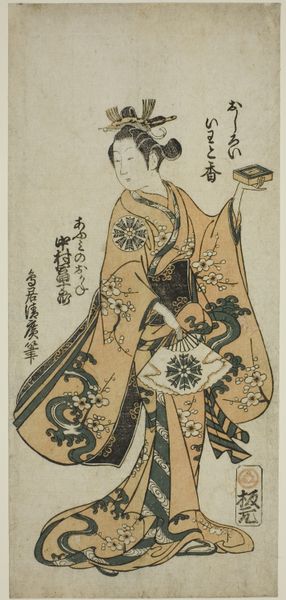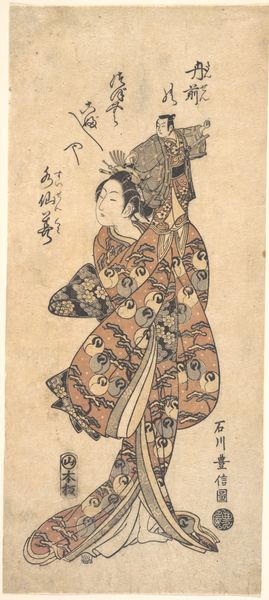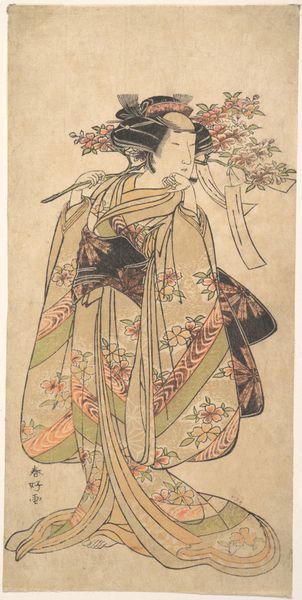
Ichikawa Monnosuke as a Sarumawashi or Monkey Showman 1720 - 1725
0:00
0:00
print, woodblock-print
#
portrait
# print
#
asian-art
#
ukiyo-e
#
figuration
#
woodblock-print
Dimensions: 13 1/4 x 6 1/4 in. (33.7 x 15.9 cm)
Copyright: Public Domain
Editor: Here we have "Ichikawa Monnosuke as a Sarumawashi or Monkey Showman," a woodblock print by Torii Kiyonobu I, dating back to sometime between 1720 and 1725. I find the flowing lines of the figure’s robe so striking. What stands out to you in this piece? Curator: This print offers us a fascinating glimpse into the intersection of Kabuki theater and popular street performance in Edo-period Japan. The depiction of Ichikawa Monnosuke, a famous actor, as a Sarumawashi, which is a monkey showman, blurs the lines between high art and popular entertainment. Consider the ukiyo-e genre itself - how did woodblock prints democratize art in this era? Editor: That's interesting, the democratization of art through prints. I guess I hadn’t considered the socio-economic impact. I was mostly just looking at the subject itself, trying to decipher how they fit together. How would a Kabuki actor typically be viewed in contrast to a street performer, and what did it mean to portray one as the other? Curator: Well, Kabuki actors held a unique place in society; admired yet also ostracized. Presenting the esteemed actor as a common street performer – the sarumawashi – subtly challenges those social barriers, making accessible a figure both celebrated and somewhat feared by society. Notice the plum blossom motif on the kimono, repeated throughout – does that speak to you as symbolism? Editor: Yes, I noticed those, but I'm not sure of the cultural context enough to interpret that. Does that have something to do with the Kabuki performance they were known for at the time? Curator: Exactly! Plum blossoms symbolized early spring and renewal, but also beauty and transience in Edo period aesthetics, often linked with themes in Kabuki plays. By putting that very obvious, repeated print, Kiyonobu is saying something deeper than a literal depiction. Editor: That's so interesting! So much is communicated just through these seemingly small details. I learned something new looking into its historic context. Curator: And hopefully it sheds some light on the social landscape of early 18th century Japan and the artist’s intention too. Art reveals the societal values of that time.
Comments
No comments
Be the first to comment and join the conversation on the ultimate creative platform.
